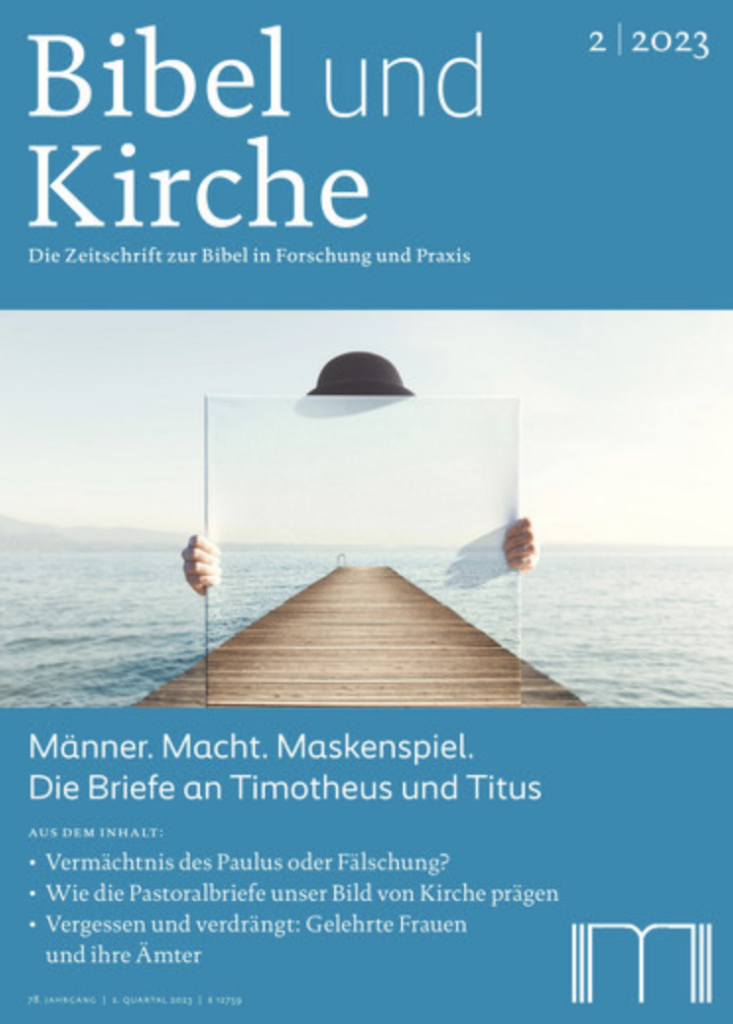
The most recent edition of Bibel und Kirche, a “journal on the Bible in research and practice [Die Zeitschrift zur Bibel in Forschung und Praxis],” has taken the Pastorals as its theme. It describes its theme in this summary:
“The two letters to Timothy and the letter to Titus are the focus of this issue. In current biblical scholarship, the three letters have a decidedly poor image. A majority assumes that the sender and addressees are a literary fiction: Neither were the letters really written by Paul, nor were Timothy and Titus their real recipients.In recent years, however, there has now been renewed movement in the discussion. The Pastoral Epistles are one of the focal points of the renewed debates about dating and authorship of the New Testament writings. There is also a new discussion about the content, especially the history of impact on the image of the church, questions of office – and also on the image of women and the question of women’s offices.” (Translation from German via DeepL)
The contents include the following articles:
Stefan Krauter
Auf den zweiten Blick
Eine Hinführung zu den Pastoralbriefen
Karl Matthias Schmidt
Larven des Lehrers
Der Abschluss der neutestamentlichen Paulus-Pseudepigraphie
Joram Luttenberger
Prophetenmantel oder Bücherfutteral?
Überlegungen zu den persönlichen Notizen in den Pastoralbriefen
Ulrike Wagener
Was sollen die Außenstehenden von uns denken?
Orientierung an der Reaktion der nichtchristlichen Umwelt
in den Pastoralbriefen
Gerd Häfner
»Eine gute Aufgabe« (1 Tim 3,1)
Ämter in den Pastoralbriefen und ihre Fortschreibung
in neuen Kontexten
Angela Standhartinger
Ältere Frauen, Presbyterinnen und Witwen in den Pastoralbriefen
Bettina Eltrop
Die Israelvergessenheit der Pastoralbriefe
Barbara Lumesberger-Loisl
“Predigtberbot für Frauen – bis heute?” Ein Zwischenruf
Literatur zum Heftthema, Mitgliederforum


